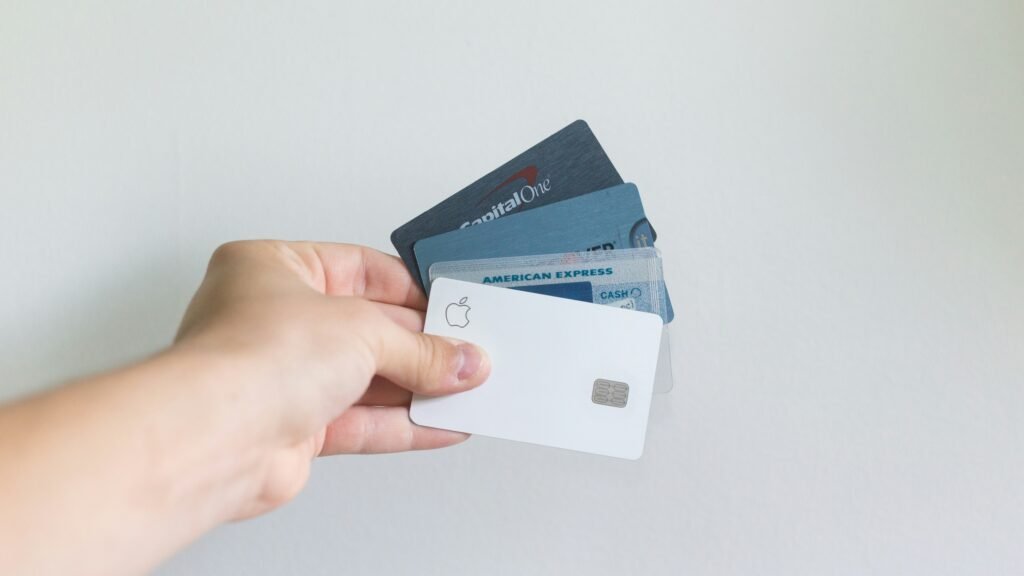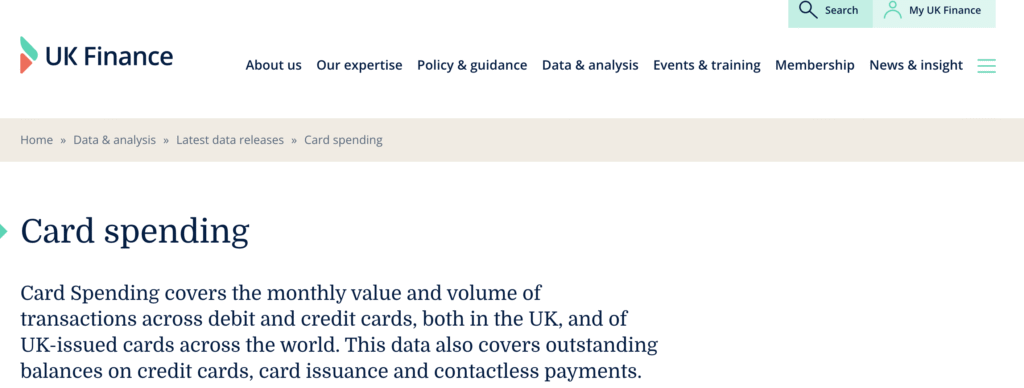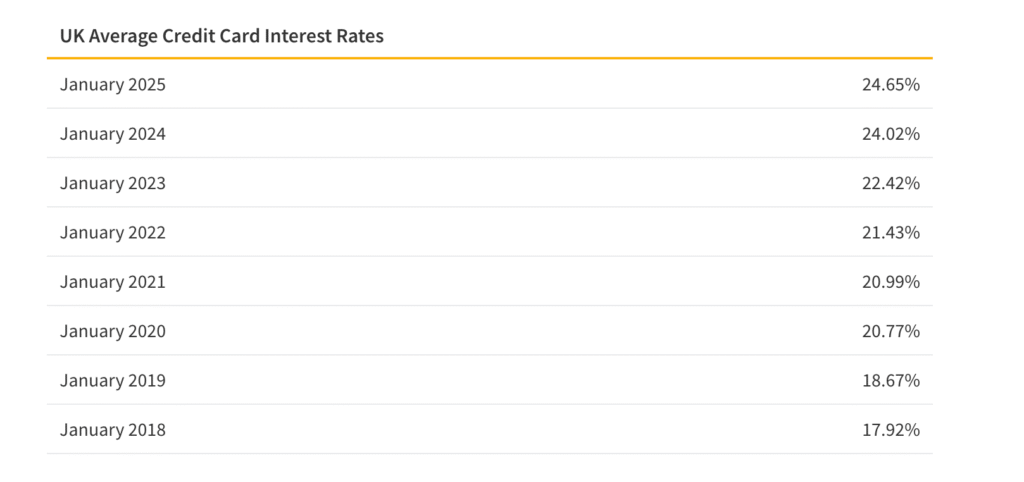Average Credit Card APR in the UK

What is the average APR in the UK in 2025? It’s an interesting question and one that has a million different answers across the internet – so we’ve decided to collate and analyse the best answer to give the most accurate answer possible.
In reality it’s perhaps one of the most interesting questions for a consumer, and poses an even deeper question – how much do banks charge me for borrowing after my minimum payment term?
What’s the Average APR in the UK, 2025?
The average APR charged by credit card providers in the UK as of July 2025 is 35%-36%. But there is significant variance in this result, based on different credit card options. In order to better calculate your credit card APR, you should use a credit card calculator as a guide. Input your payments and outstanding balance to work this out quickly.
Why APR Matters to You and Me

As someone who’s carried a credit card since I first hit my 20s, I’m painfully aware how fast interest can rack up when life doesn’t go to plan. APR (Annual Percentage Rate) is the true cost of borrowing, rolled into one neat figure for comparing deals. Understanding the typical APR helps you figure out whether you’re paying above-average interest or striking a decent bargain.
There’s nothing abstract about it: APRs on cards today hover around one‑third of what you borrow annually…enough to make a dent in household budgets and debt.
Consumer averages from MoneyFacts & Finder
- Moneyfacts: In June 2025, the average purchase APR (which includes interest and fees) hit 35.7%—the highest since their records began in 2006
- Finder: Reports an average credit card APR at 36.03% for July 2025, up from 32.35% in July 2023
These figures are roughly consistent—mid-30s in APR. Put simply: borrowing £1,000 at today’s average rate could cost you about £360 in interest and fees over 12 months, on top of what you owe.
APR Rates Are Climbing
Comparing to just a few years ago:
- June 2023: ~32.24% (Finder)
- July 2023: ~32.35%
- February 2025: ~35.6%, dipping to ~35.3% by May 2025
That’s almost a 4 percentage‑point jump in two years—a substantial cost escalation.
The Bank of England base rate (used by lenders to price borrowing) peaked at 5.25% in August 2023, stabilised around 5.0% in mid‑2024, and eased to ~4.25% by June 2025. Yet card APRs kept rising… credit providers tend to pass on rises faster and hold off on reductions.
The Moneyfacts report emphasises this: despite base rate cutting, APRs rose to 35.7% by June 2025. A recent warning urged users to “check their accounts now,” especially given steep hikes at some banks.
APR by Card Type

Not all cards are the same—APR varies significantly by type:
| Card Type | Average APR (approx.) |
|---|---|
| Balance Transfer | 26.1% |
| Cashback | 27.45% |
| Purchase | 28.43% |
| Overseas/Travel | 32.36% |
| Supermarket | 34.9% |
| Student | 29.4% |
| Credit Builder | 36.35% |
| Business | 36.35% |
| Rewards | 45.09% |
| Frequent Flyer | 62.91% |
Source: Finder’s data as of June 2025.
Why does it differ?
- Credit‑builder and business cards cater to higher‑risk applicants, hence APRs above 36%.
- Frequent‑flyer/rewards cards charge steep rates (~45–63%) as you’re paying premium for perks.
- Everyday purchase and cashback cards are “cheaper” at ~28%, but still expensive compared to other credit forms.
Contrast that with balance‑transfer cards at ~26.1%—but remember that’s post promotional period, which may start at 0%.
APR vs Purchase Interest Rate
Finder notes the average APR (~36%) is higher than the average interest-only purchase rate (~26.96%) for June 2025. That difference is fees, charges, or other factors baked into APRs. So while your monthly rate may be ~27%, the true cost (APR) is nearer ~36%.
The Real-Life Cost…

In my 30s, I used a travel reward card. They offered airline points and insurance, but charged ~45% APR. I told myself I’d pay off each month, but life (repairs, bills, etc.) muddied the waters. A missed payment triggered a nasty bump, compounding interest daily.
Then, juggling multiple cards, I saw how one 0% balance-transfer card could help. But after the promo ended, the APR hit me like a brick—mid‑20s—but nowhere near the mid‑30s average.
Observing graph trends from Bank of England data & NimbleFins data, average APRs have climbed steadily since 2020—from low‑20s to mid‑30s.
Why APRs Are Rising (Even if Base Rate Falls)
Multiple reasons:
- Risk buffers: Lenders build cushion into APRs, which they haven’t removed when base rate drops.
- Fee recovery: Non‑interest fees have increased, raising APRs.
- Operational costs: Fraud, tech investment—spread across customers.
- Risk‑based pricing: More cost, more APR, especially for those with imperfect credit.
Plus, issuance of new cards with high APR, some averaging >35% entry-level, pushes up the national average.
Household Debt & the Wider Impact
- Outstanding UK credit‑card debt was £71.7 billion in September 2024 which is a 9.5% annual increase.
- Average household carries £2,486–£2,611 in card debt.
- Average card balance sits around £1,865–£1,875
So the average family owes ~£2.5k at ~36% APR. That’s over £500 a year in interest—real money that could instead fund groceries, savings, holidays.
Practical Tips (from My Experience)
- Keep APR in mind, not just intro deals: 0% deals can lull you into thinking you’ve “got time.” But after promo ends, rates shoot up—like that travel card I had.
- Don’t fixate only on interest rate: Always check the post‑promo APR—even 26% balance‑transfer cards can be cheap compared to 36% purchase APRs.
- Watch fee‑heavy cards: Rewards and frequent‑flyer cards often come with generous perks, but APRs > 45% overshadow them unless you clear balance monthly.
- Score‑based pricing matters: With good credit, your rate may be closer to ~20%. Poor credit, you’re paying ~36%+.
- Balance‑transfer is a tool, not a crutch: I used BT cards twice. First to consolidate debts, then to transition to monthly payments. But you must have repayment discipline.
- Stay alert to rate changes: Some banks hike rates without warning… like First Direct, raising from 19.9% to 24.9%. I moved my balance before it hit.
- Use comparison and eligibility tools: Sites like TotallyMoney, MoneySavingExpert, Compare the Market let you see likely deals before applying.
What If You’re Carrying a Balance?
Experian reported that over 10 million card users could save ~£1,392/year by switching to a 0% balance‑transfer with 29-month promo. For example, £3,109 on a 21.4% APR card costs a fortune monthly. Shifting to a Balance Transfer card and paying down principal can yield serious savings.
But a warning: using a debt consolidation loan at ~5.9% APR might be even cheaper over 5 years than keeping a balance on a credit card. Always crunch the numbers.
UK Spending & Borrowing Patterns

- April 2025 saw 383.5 million credit card transactions a 2.4% rise YoY, a total value £21.3 billion.
- Revolving consumer credit (credit cards included) grew 6.4% YoY by Feb 2025 card borrowing alone rose 8.9% YoY.
- April 2025: 48.4% of balances incurred interest, so nearly half of all outstanding debt costs something in APR.
We’re spending more, borrowing more, and paying interest on a higher share. This makes APR central to household budgeting.
Looking Ahead
- Base rate likely stays around 4.25% for now.
- Yet credit‑card APRs may remain elevated. Lenders prefer fatter cushions than mirroring BoE cuts.
- Credit-builder and rewards cards might be priced to compensate for risk and perks.
Summary / Key Facts
- Average APR in mid‑2025: ~35.6–36.0%.
- These are record highs, not seen for at least 20 years (see sources)
- Significant variation by card type: 26% for BT, ~45% for rewards, ~63% for frequent‑flyer
- Living example: paying 45% APR on postcard‑reward travel card became my wake‑up call.
- Key tool: comparison. Save via balance‑transfer, personal loans, or better‑priced cards.
- APR isn’t static: can jump without warning, so watch rates, don’t just chase intro deals.
If you’re paying interest on a credit card, that interest is probably high, and it could be worse than you realise. With typical APRs around a third annually, decide if a move to cleaner, cheaper deals could boost your budget.
Helpful Sources / Links

- NimbleFins: UK average credit‑card rates ~24.65% (Jan 2025)
- Finder: 36.03% average APR (July 2025); breakdown by type
- Moneyfacts: record‑high 35.7% purchase APR (June 2025)
- Bank of England: debt and BoE base‑rate context
- Experian: potential savings via balance‑transfer
- TotallyMoney/The Sun: bank APR hikes & cautionary reminders
Our Final Thoughts
Your credit-card APR isn’t just a number…it’s the cost of financial freedom. Higher-than-average APRs don’t just pinch, they compound. When I used a credit card calculator to actually work out how much it was costing me, I ditched my mid‑40s travel‑reward APR, shifted balances, negotiated or moved, I freed hundreds more in my budget each year.
If you’re not paying attention to your card’s APR, especially if it’s above 30%, take action. Switch, consolidate, or pay down. In today’s climate, that £360‑plus per £1,000 borrowed isn’t abstract…it’s real money you could spend smarter.
James is a leading expert in UK personal finance (saving, investment & borrowing) - leading both Credit Card Calculator & ISA Interest Calculator tools. He has 8+ years of experience in personal finance, credit / borrowing & ISA savings. He has been regularly featured on several prominent business & investment-related sites in the UK. When he is not working he enjoys spending time with his daughter and hikes in the Scottish highlands.
Paul is an experienced financial advisor (IFA) and banking expert with 10+ years in the credit swap, default and risk analysis space for major banking institutions like Barclays and Halifax. He is a renowned speaker in the subject of personal finance and investment having featured in Forbes and Business Insider.
Emma is the lead developer for credit card calculator. She works with the team to build comprehensive credit card calculation tools & financial tools. With a background in web and mobile development, she brings years of experience to the credit card space and developer space. When she is not working, she likes spending time with her daughter, Grace, and two dogs, Lulu & Baxter.


